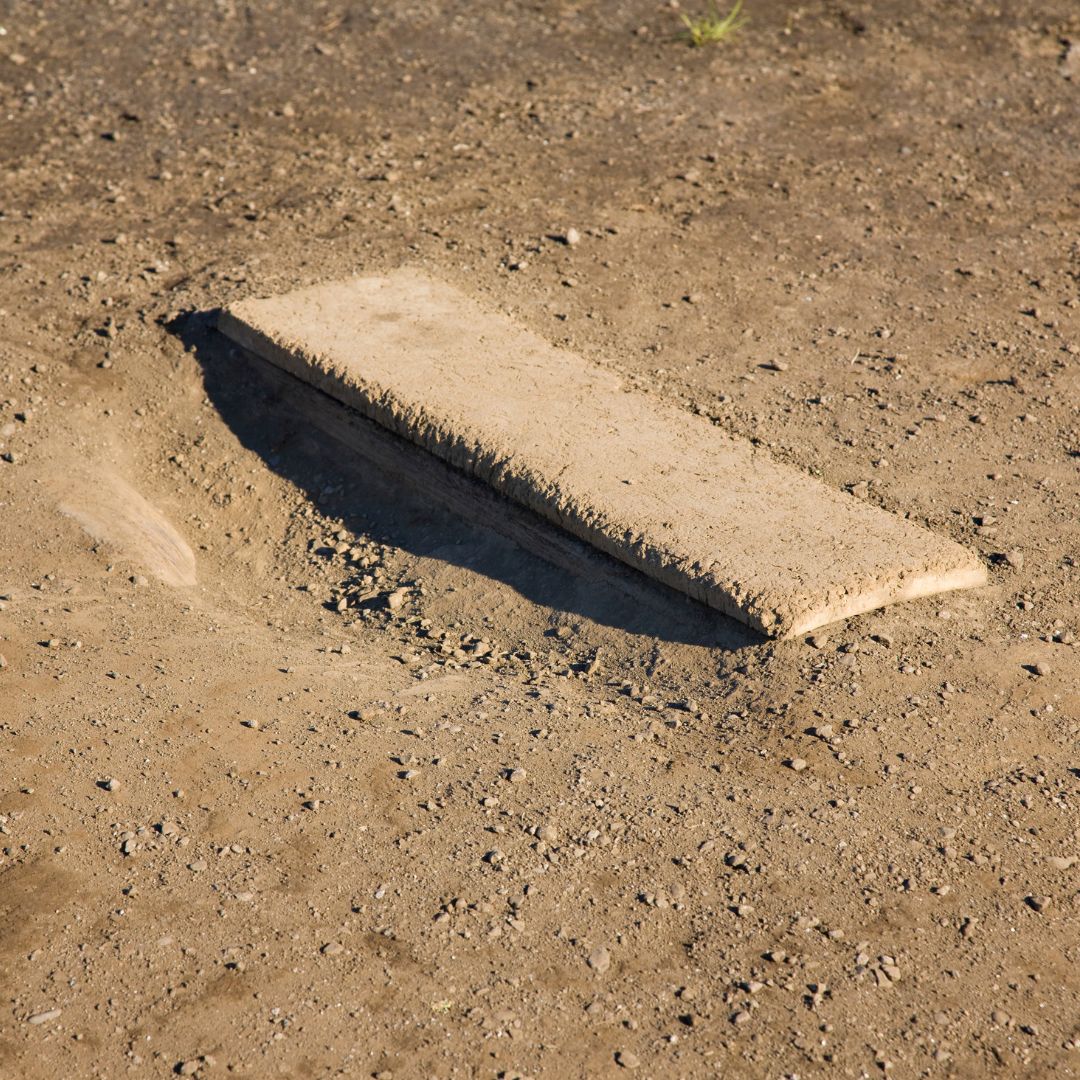
Maintaining ball fields helps keep the players safe and the field looking great.
The best way to keep your fields maintained: scheduling ballfield preventative maintenance early…and often.
Your fields may take a beating throughout the summer. Routine inspections and maintenance can help ensure the smaller issues don’t become expensive and hazardous problems to fix.
Here are some baseball field maintenance tasks to consider and schedule to help your ballfields during the season.
Smooth the Batter’s Box
Without proper maintenance, batter boxes can get uneven. It’s the spot of the field that sees the most barren spots, irregular lumps, and holes.
If your field is on a clay surface, a common mistake is raking out the area with the toothed side of the rake. Use the flat edge for better results and to help preserve the integrity of the clay.
Care for the Pitcher’s Mound

Another spot that gets beat up throughout the season is the pitcher’s mount. Pitchers often create worn areas by how they push off with their feet. Plus, all that dirt they kick around between pitches doesn’t help.
Sweep the holes and worn areas of the mound. If you need to add new clay, dampen the low spots first.
Use a slope gauge to check the front slope of the mound as the season progresses. This will help you keep track of the slower-wearing areas that are less noticeable.
If the mound needs to be adjusted, add clay or cut down where required. Then soak the mound. Add some more topdressing. And, finally, water it once again.
Drag Base Paths
Another heavy traffic area is the base paths. If your agency has the baseball field maintenance equipment, you can drag the base paths with a machine tool.
If you don’t have the equipment, it may be a blessing in disguise. You often get better results by dragging it by hand. You may not get precision, but the main thing to do is cut down the high spots and fill the usual low areas.
Whichever method you choose, make sure your drag is not overlapping with the grass. That will cause the ridge (or lip) between the infield and outfield--a telltale sign that the field isn’t maintained well.
Water the Field When Necessary
There’s a good chance you won’t be able to water down every field before every game. However, if a tournament or a busy week is coming up, a little watering wouldn’t hurt.
Watering the playing surface ensures the right amount of moisture that helps keep the turf healthy and the infield mix compacted properly.
Midseason Aeration
Aeration is typically reserved for the spring or fall. Some agencies add midseason aeration for heavy traffic areas. It generally depends on how much the fields get used.
It may be beneficial to schedule a midseason aeration, because, as we all know, grass needs oxygen to survive. Aeration is one of the best ways to get extra oxygen to the turf.
Keep in mind that it may take up to 2 weeks for turf to recuperate from core aeration. So if you have an “all-star break” midseason, this may be a good opportunity.
Stay on Top of Tasks
When you have a process in place, your ballfield maintenance will be less reactive and more systematic.
Schedule regular inspections to stay on top of ballfield issues. Here are some things your team should look for at least weekly:
- Grass length is between 1 to 2 ½ inches long.
- Check the conditions of lines and other markings.
- Check for holes and ruts throughout the field.
- Ensure a ridge is not forming between the infield and outfield.
- Check the condition of the batters’ box and the pitcher's mound.
- Make sure ballfield maintenance equipment is in good working order.
Also, set up routine baseball field maintenance tasks throughout the season. We all know summer gets crazy busy, so the more scheduling you do ahead of time, the less likely your ballfields will get overlooked or neglected. Some find that computerized maintenance management software helps make this process easier.
Also, ensure a work order system allows those not on the maintenance team to communicate issues effectively. The more eyes on the field, the better.
